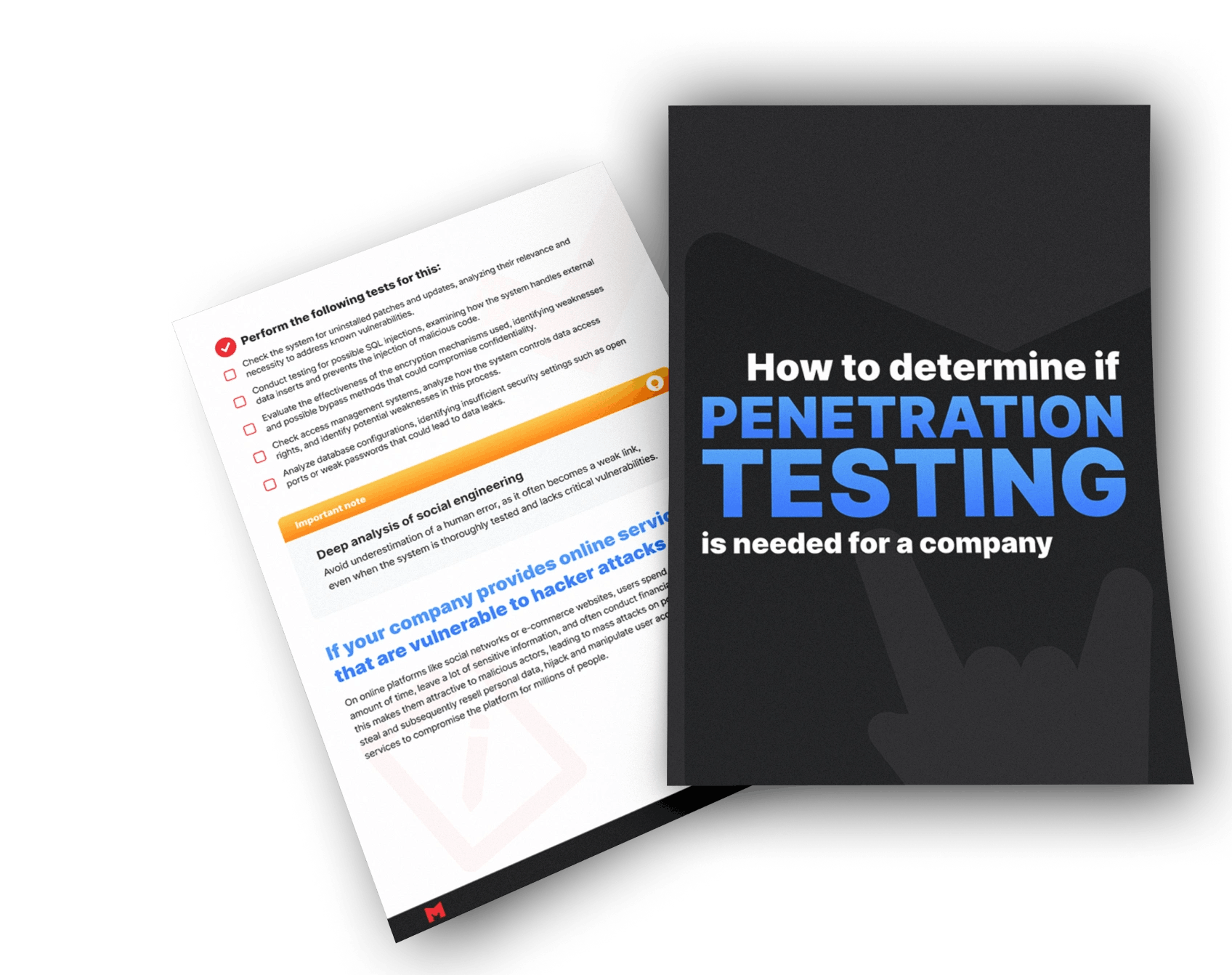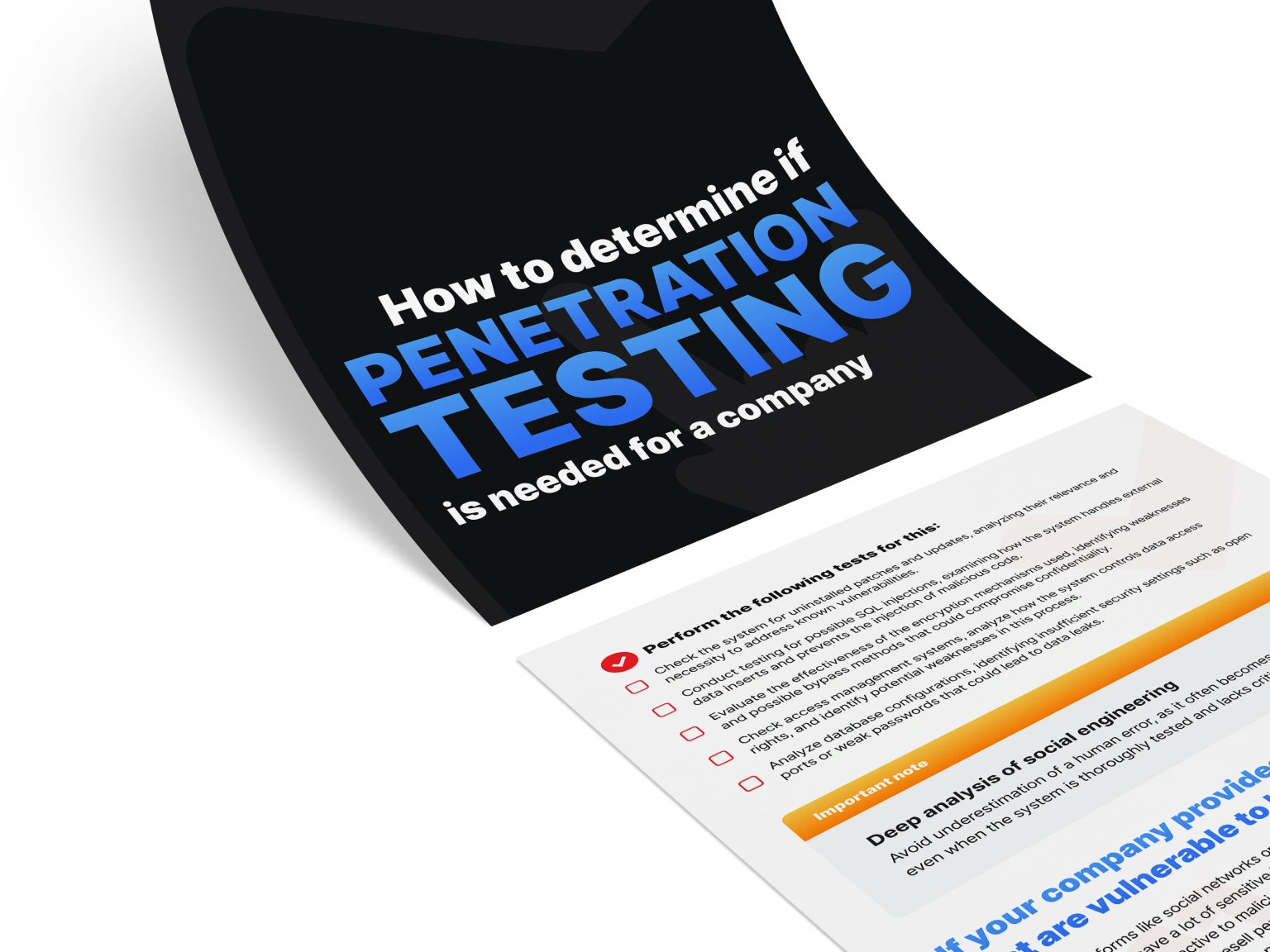
How to Determine if Penetration Testing is Needed for a Company

Learn how to avoid security issues
Security is paramount to the current and any potential assets. Through regular security tests, an organization invests not only in its secure present but also in its steady future.
System
vulnerabilities
Identify and address system vulnerabilities to effectively avoid potential risks associated with unauthorized access and cyberattacks.
Configuration
instability
Strengthen the resilience of network devices, servers, and applications to mitigate configuration vulnerabilities and reduce the susceptibility to various cyber threats.
Weak incident
detection
Ensure your incident detection and response mechanisms provide a robust defense and enable you to circumvent challenges related to slow identification and potential threat response.
Business process
disruptions
Evaluate the resilience of business logic to safeguard against disruptions, facilitate smooth operations, and avert potential interruptions in critical business processes.
Regulatory non-compliance
Verify system compliance with legal requirements and security standards to prevent regulatory pitfalls, ensure alignment with industry norms, and avoid potential compliance-related issues.
Vulnerability
to social engineering
Simulate social engineering attacks to expose and address weaknesses in staff training and awareness, fortifying defenses against potential threats posed by social engineering tactics.
